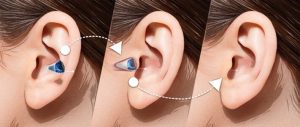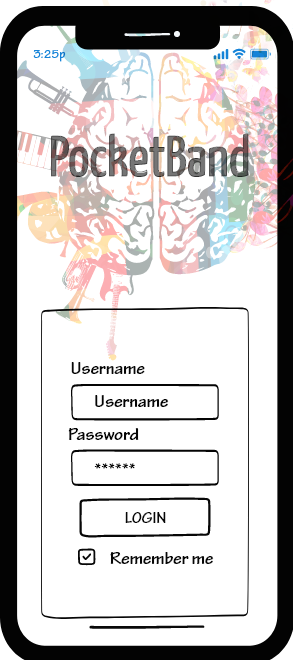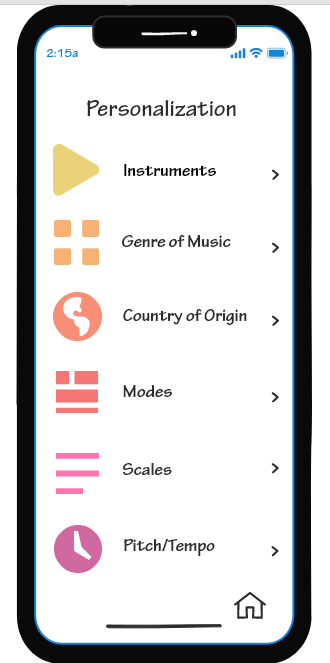
Blocker Bracelet was created in response to the widespread shortage of ‘reallife’ artists. What are ‘reallife’ artists? Reallife artists proliferated the music scene up until 2020. They can be impossible to detect as there is no physical way to tell them apart from algorithmic artists. Real life artists are different, as they do not use inner ear pieces to create music from algorithmic feeds.

The Blocker Bracelet alerts ‘reallife’ artists to any algorithmic ear pieces within 5 metres.
The creation of Blocker Bracelet was funded by the National Music Archival Society of Canada.
——-✹——-✹——-✹——-✹——-✹——-✹——-✹——-✹——-✹——-✹——-✹——-✹
How did it all begin?

These snippets of speculative fiction were born of of a design I created for another class, PocketBand. Pocket Band is a mobile algorithmic band app that allows musicians to create music with an algorithmic ensemble instead of real musicians. I created this app because I genuinely thought it would make my life and the life of other artists, better. When I started task 12, I thought of our discussions about the way we interact with text. I also contemplated the question about how things would change if algorithms appeared in the public space and at the forefront of creation. I tried to bring together what we learned from past weeks about the preservation of knowledge (Brown University, 2017) and machine bias (McRaney, n.d.). During the design process of PocketBand, I tried to give the user as much personalization as I could, including the ability to choose the country of origin that algorithmic melodies would be based on, and the ability for individuals to record their preferred musical styles.

Despite all of the options for personalization, my speculative fiction highlights the future impact of a technology like PocketBand, and asks the question whether or not this new mode of creation should replace ‘realtime’ artists. Adding to that, would a technology like this one, ‘replace’ anyone, or is it simply a new artistic medium? I imagined a future where additional technologies were created after PocketBand, such as an earpiece for hands-free/discrete algorithmic composition, and a Blocker Bracelet funded to preserve a dying mode of creation. The earpiece and bracelet were imagined as critical designs, to “…confront us with alternative needs and hint at a parallel world…”(Dune & Raby, 2013) like the release of the JoyCam, after photography became digital.
If you are interested in viewing the full project, please click here:
Brown University. (2017, July 11). Abby Smith Rumsey: “Digital Memory: What Can We Afford to Lose?” [Video] YouTube. https://youtu.be/FBrahqg9ZMc
Dunne, A., & Raby, F. (2013). Speculative Everything: Design, Fiction, and Social Dreaming. Cambridge: The MIT Press.
McRaney, D. (n.d.). Machine Bias (rebroadcast). In You Are Not So Smart. Retrieved from https://soundcloud.com/youarenotsosmart/140-machine-bias-rebroadcast
